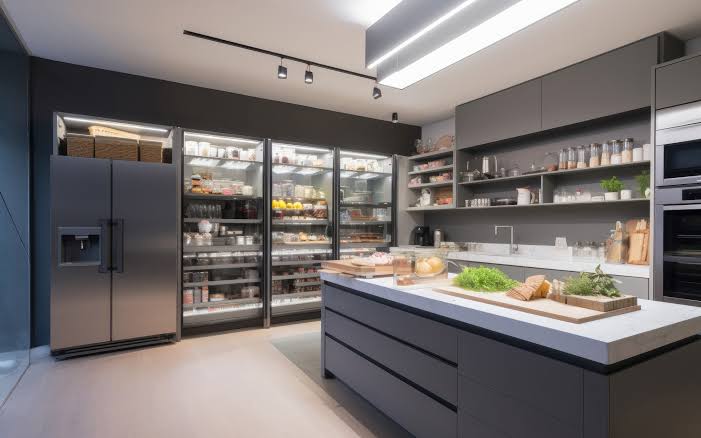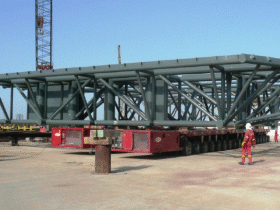As global temperatures continue to rise, with 2022 being one of the hottest years on record, the need for sustainable cooling solutions has never been more pressing. Cooling technologies are projected to account for two-fifths of Southeast Asia’s electricity demand by 2040, contributing to 3.4% of global emissions. From geothermal cooling systems to solar-powered air conditioning and passive cooling techniques, the landscape of sustainable cooling is rapidly evolving. These innovative technologies reduce energy consumption and provide cost-effective solutions for both residential and commercial applications, ultimately contributing to a greener future.
The Importance of Sustainable Cooling in the Fight Against Climate Change
Sustainable cooling practices have the potential to reduce greenhouse gas emissions by at least 60% by 2050, while helping over one billion people adapt to climate change impacts. These efforts provide substantial economic advantages, with end-user electricity savings projected to reach $1 trillion by 2050.
Innovative solutions, such as using CO2 as a refrigerant in supermarkets, can lead to a 35% reduction in power consumption. Over 35,000 CO2-based cooling systems have been installed globally, primarily in Europe. The development of energy-efficient appliances, including the fridge freezer, has also contributed significantly to reducing energy consumption in households and businesses.
The Kigali Amendment to the Montreal Protocol aims to phase down the consumption of hydrofluorocarbons (HFCs), potent greenhouse gases found in air conditioners and refrigerators. Transitioning to ozone and climate-friendly alternatives can avoid a temperature increase of more than half a degree Celsius by the end of the century.
- Researchers are exploring natural refrigerants like carbon dioxide (CO2), ammonia (NH3), hydrocarbons (HCs), and water (H2O) for sustainable cooling solutions.
- Effective safety standards for ammonia and hydrocarbon-based cooling systems are crucial due to their toxicity and flammability.
- Passive cooling mechanisms in buildings can save up to 70% of energy consumption.
As the global demand for air conditioners surges, with an average of 10 devices sold per second, it is essential to prioritize investment in cooling research and development. To reach carbon reduction goals, buildings must be designed to be low carbon, resilient, and capable of passive survivability.
Geothermal Cooling: Harnessing the Earth’s Natural Temperature Regulation
Geothermal cooling leverages the Earth’s stable underground temperatures to provide efficient and eco-friendly cooling solutions. The Earth’s subsurface temperature typically ranges from 45°F to 75°F (7°C to 24°C), regardless of weather conditions above ground.
Geothermal heat pumps (GHPs) circulate a fluid through a network of underground pipes, allowing for efficient temperature exchange. These systems are up to 400% more energy-efficient than conventional heating and cooling methods, potentially reducing heating and cooling costs by 50-70%.
Geothermal cooling systems offer several advantages:
- Longer lifespan: Ground loops can last up to 50 years, while the heat pump unit typically lasts 20-25 years.
- Silent operation: Geothermal systems operate quietly, providing a peaceful living environment.
- Reduced carbon footprint: By emitting fewer greenhouse gases than conventional systems, geothermal cooling contributes to a cleaner, greener future.
While initial investment costs can be higher due to ground loop installation, the long-term benefits are substantial, with potential energy savings within 5 to 10 years.
Solar Cooling Technologies: Utilizing Renewable Energy for Air Conditioning
Solar cooling technologies harness renewable energy for air conditioning and refrigeration, reducing dependence on conventional power grids. These systems can be divided into two main categories: active and passive systems.
Active solar cooling systems utilize solar panels to convert sunlight into electricity, powering air conditioning units. This approach reduces energy costs and minimizes greenhouse gas emissions. Advanced technologies like solar absorption cooling, solar adsorption cooling, and solar desiccant cooling further enhance efficiency.
Passive solar cooling focuses on architectural designs that naturally regulate indoor temperatures. Key elements include:
- Strategic window placement and shading
- Thermal mass materials to absorb and release heat slowly
- Natural ventilation and air circulation
- Reflective roofing materials to reduce heat absorption
Solar-powered refrigerators and fridge freezers provide off-grid solutions for preserving food and medicines in remote areas or during power outages. These energy efficient appliances incorporate advanced features to minimize energy consumption and operating costs.
Sustainable Cooling Systems: Innovations for a Greener Future
With air conditioning accounting for nearly 4% of global greenhouse gas emissions, innovations in absorption cooling, ice-powered air conditioning, and magnetic refrigeration offer promising alternatives for a greener future.
Absorption cooling harnesses renewable energy sources to drive a thermochemical absorption process, reducing reliance on traditional cooling methods. In regions like the Middle East, district cooling systems utilizing absorption technology can potentially reduce CO2 emissions equivalent to planting over 14 million trees annually.
Ice-powered air conditioning generates ice during off-peak hours to cool buildings during peak heat periods, optimizing energy efficiency and reducing strain on the power grid.
Magnetic refrigeration leverages the magnetocaloric effect to eliminate the need for harmful traditional refrigerants, offering an environmentally friendly alternative to conventional cooling systems.
While initial costs can be substantial, long-term energy savings and tax rebates often offset these expenses. Newer HVAC systems with high SEER ratings can lead to a 20%-30% drop in energy consumption during summer compared to older models. Sustainable technology innovations continue to drive progress in this field.
Passive Cooling Techniques: Designing Buildings for Natural Temperature Control
Passive cooling techniques regulate indoor temperatures without relying on electricity. By incorporating thoughtful building design elements, architects can create structures that naturally maintain a comfortable environment, saving money on energy bills and improving indoor air quality.
Night cooling allows cooler air to flow into buildings during the night, lowering indoor temperatures. Traditional architectural features like windcatchers can reduce the temperature inside a building by up to 10 degrees Celsius through evaporative cooling.
Urban cooling can be achieved through the thoughtful design of outdoor spaces, including greening urban areas with vegetation and incorporating bodies of water. These features moderate air temperature, reduce noise pollution, and enhance biodiversity.
Considering that around 40% of the world’s energy is used in buildings, with cooling, ventilation, and heating accounting for up to 70% of total energy use, passive cooling techniques are vital for creating energy-efficient structures. This is particularly crucial in developing countries with high ambient temperatures and limited access to active cooling techniques.
Conclusion
The urgent need for sustainable cooling solutions is evident in the face of climate change and rising global temperatures. Innovations in modern refrigeration technology offer promising avenues for reducing energy consumption and greenhouse gas emissions. By harnessing renewable energy, embracing energy-efficient technologies, and promoting sustainable design practices, we can significantly reduce our carbon footprint and mitigate the effects of climate change. It is up to us to take urgent action and make the necessary changes to ensure a greener, more sustainable future for generations to come.












Leave a Reply